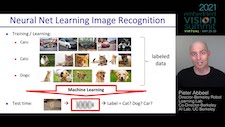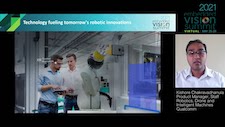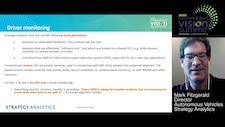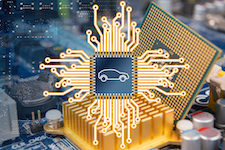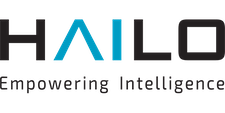| LETTER FROM THE EDITOR |
Dear Colleague,
Today, September 28 at 9 am PT, Sequitur Labs will deliver the free webinar “Securing Smart Devices: Protecting AI Models at the Edge” in partnership with the Edge AI and Vision Alliance. Billions of new IoT devices are expected to come online in just the next few years. Securing these devices is an area of significant concern–to date, about half of IoT vendors have experienced at least one security breach. IoT vendors need to ensure that their products are designed, manufactured and deployed without risk of being compromised. And the problem is becoming even more serious with the deployment of AI models at the network edge. Implementing IoT security, is, however, a big challenge. It requires understanding a variety of new features and functions, a steep learning curve in learning how to implement these features using the silicon of choice, and an investment in mastering a diverse, fragmented microprocessor market, since each microprocessor vendor implements security differently. This webinar will cover best practices for securing smart devices at the edge, including a number of methods for protecting AI models, as well as real-life case studies and demonstrations of the concepts discussed. For more information and to register, please see the event page. And next Tuesday, October 5 at 9 am PT, Eta Compute will deliver the free webinar “How Battery-powered Intelligent Vision is Bringing AI to the IoT” in partnership with the Edge AI and Vision Alliance. In today’s landscape for the enterprise Internet of Things (IoT), the promise of artificial intelligence (AI) is as yet unfulfilled. Existing solutions are complex and expensive to deploy and do not address the numerous cases where low power consumption is critical. In this webinar, you’ll learn about various applications for AI at the edge, as well as how battery-operated and AI-based computer vision can solve real-world problems and create business value. A case study example will highlight Eta Compute’s space monitoring sensor, Tally. By providing high-accuracy, reliable local insights in an easy-to-deploy form factor, Tally helps enterprises in building, hospitality, and retail make better decisions and optimize occupants’ space and well-being. For more information and to register, please see the event page. Brian Dipert |
| VISION FOR ROBOTICS AND BROADER AUTONOMY |
|
From Inference to Action: AI Beyond Pattern Recognition Also see Abbeel’s Q&A session with Jeff Bier, the founder of the Edge AI and Vision Alliance, also at the Summit. 5G and AI: Transforming the Next Generation of Robotics |
| AUTOMOTIVE MARKET PERSPECTIVES |
|
Embedded Vision in ADAS and Autonomous Vehicles: Navigating the New Reality Winds of Change in the Automotive Semiconductor Industry |
| UPCOMING INDUSTRY EVENTS |
|
Securing Smart Devices: Protecting AI Models at the Edge – Sequitur Labs Webinar: September 28, 2021, 9:00 am PT How Battery-powered Intelligent Vision is Bringing AI to the IoT – Eta Compute Webinar: October 5, 2021, 9:00 am PT |
| FEATURED NEWS |
|
Syntiant Unveils the NDP200 Neural Decision Processor for Always-On Vision Edge AI Applications and NDP102 Neural Decision Processor for Edge AI Sensor Applications Basler’s Expanded CXP-12 Product Portfolio Encompasses Cameras, Interface Cards and Accessories Luxonis and OpenCV’s New OAK-D-LITE Smart Depth Camera is the Smaller Sibling of OAK-D, a 2021 Edge AI and Vision Product of the Year Award winner Cadence Accelerates Intelligent SoC Development with Its Comprehensive On-Device Tensilica AI Platform Newly Announced Software Technologies from Arm Aspire to Transform the Future of the Automotive Industry |
| EDGE AI AND VISION PRODUCT OF THE YEAR WINNER SHOWCASE |
|
Hailo Hailo-8 AI Processor (Best Edge AI Processor) Please see here for more information on Hailo’s Hailo-8 Processor. The Edge AI and Vision Product of the Year Awards celebrate the innovation of the industry’s leading companies that are developing and enabling the next generation of edge AI and computer vision products. Winning a Product of the Year award recognizes a company’s leadership in edge AI and computer vision as evaluated by independent industry experts. |


